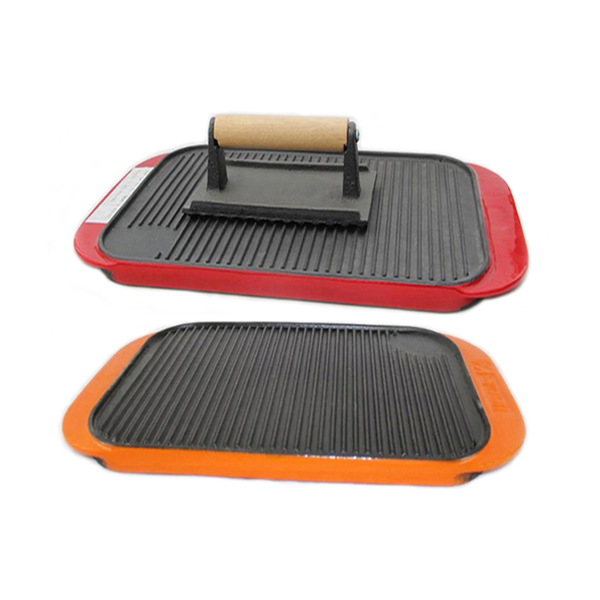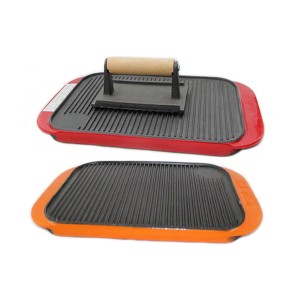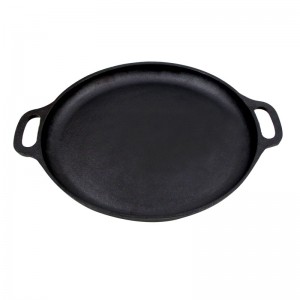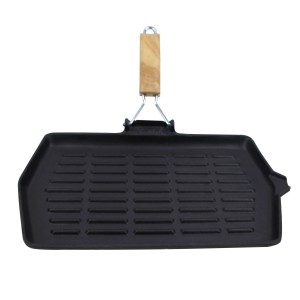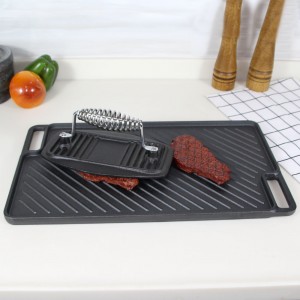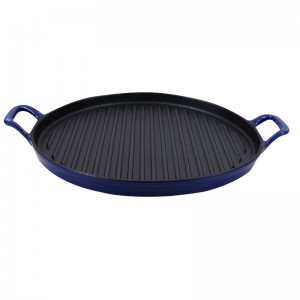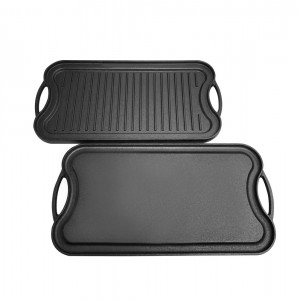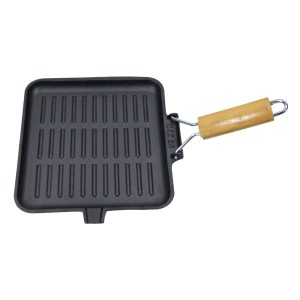Cast Iron Grill Pan/Griddle Pan/Steak Grill Pan PC205/205-1
How to Use Enamel Cast Iron Cookware
1. First Use
Wash the pan in hot, soapy water, then rinse and dry thoroughly.
2. Cooking Heats
Medium or low heat will provide the best results for cooking. Once the pan/pot is hot, almost all cooking can be continued on lower settings. High temperatures should only be used for boiling water for vegetables or pasta, or it will cause food to burn or stick.
3. Oils and fats
With the exception of Grills, the enamel surface is not ideal for dry cooking, or this may permanently damage the enamel.
4. Food storage and marinating
The vitreous enamel surface is impermeable and therefore ideal for raw or cooked food storage, and for marinating with acidic ingredients such as wine.
5. Tools to use
For stirring comfort and surface protection, silicone tools are recommended. Wooden or heat-resistant plastic tools may also be used. Knives or utensils with sharp edges should not be used to cut foods inside a pan.
6. Handles
Cast iron handles, stainless steel knobs and phenolic knobs will become hot during stovetop and oven use. Always use a dry thick cloth or oven mitts when lifting.
7. Hot pans
Always place a hot pan on a wooden board, trivet or silicone mat.
8. Oven use
1. Products with integral cast iron handles or stainless steel knobs can be used in oven. Pans with wooden handles or knobs must not be placed in the oven.
2. Do not place any cookware on the floors of ovens with cast iron linings. For best results always place on a shelf or rack.
9. Cooking tips for grilling
Grills may be preheated to reach a hot surface temperature for searing and caramelization. This advice does not apply to any other products. For correct grilling and searing, it is important that the cooking surface is sufficiently hot before cooking begins.
10. Cooking tips for shallow frying and sauteing
1. For frying and sauteing, the fat should be hot before adding food. Oil is hot enough when there is a gentle ripple in its surface. For butter and other fats, bubbling or foaming indicates the correct temperature.
2. For longer shallow frying a mixture of oil and butter gives excellent results.
11. Cleaning and Care
1) Always cool a hot pan for a few minutes before washing.
2) Do not plunge a hot pan into cold water.
3) Nylon or soft abrasive pads or brushes can be used to remove stubborn residues.
4) Never store pans while they are still damp.
5) Don't drop or knock it against a hard surface.
Application



